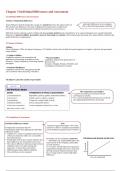Summary
Psychology in the Workplace - complete summary incl. notes form readings
- Course
- Institution
This document is a complete summary, structured week by week, with sections divided by book chapters. Though the summary is organized around the themes and structure of the book, it includes, according to each topic, all relevant information given during the lectures and on lecture slides.
[Show more]



